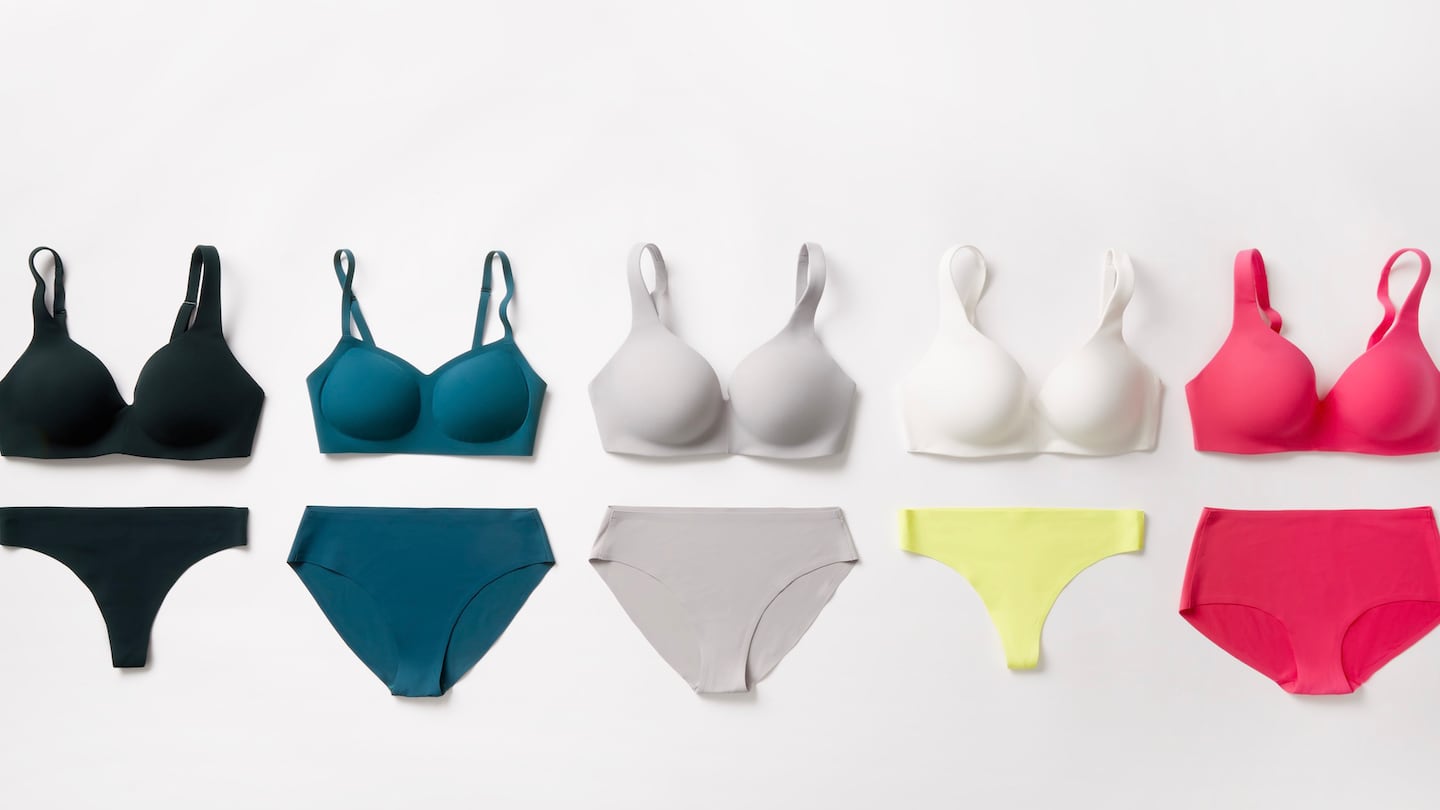
The Business of Fashion
Agenda-setting intelligence, analysis and advice for the global fashion community.

Agenda-setting intelligence, analysis and advice for the global fashion community.

Another apparel giant is venturing into the fast-growing, but crowded underwear category.
Athleta, the activewear brand that has emerged as a rare bright star in Gap Inc.’s portfolio, will be launching an intimates collection called “Rituals” on Sept. 20 on its website.
Underwear is a promising category — NPD Group predicts a two-year average growth rate of 9 percent — but competition is steep. Athleta will be challenging not only retail giants like American Eagle Outfitters’ Aerie, but also formidable new entrants in the market, including Gen-Z-friendly Parade, period underwear startup Knix and Kim Kardashian’s Skims.
Meanwhile, Victoria’s Secret, far and away the market leader, is in the middle of a turnaround that has seen the brand shed its overtly sexual marketing in favour of a more diverse, body positive image.
ADVERTISEMENT
Athleta’s managers knows the challenges ahead. The San Francisco-based brand briefly sold underwear in stores and online in 2018, but the customer response was lacking. It pulled the small assortment within a year.
“What we found in the first launch was that the product wasn’t perfect,” said Ebru Ercon, Athleta’s vice president of design. “Often with performance brands, you’ll iterate and iterate until you get it right.”
This time around, the collection, which includes three styles of underwear and two bras, was tested by more than 100 women for fit and quality. While the bras are not suited for high-impact activity, each product is designed for prolonged everyday wear.
These pieces differ from what competitors offer because of their performance-driven fabric and construction, Ercon added. The seams on the underwear, for instance, are glued together rather than sewn, achieving more ease of movement. Prices will also be slighter higher than that of mall chain competitors: bras cost $59 to $69 while underwear is $16 per pair.
“There’s no fussy trims, there’s nothing there that doesn’t need to be in here,” Ercon said.
The launch comes at a critical time for Athleta. After a banner year in 2021, interest in the brand’s activewear offering has waned this year as consumers opt for dressier styles. In its most recent quarter, Athleta sales grew 1 percent compared with the same period in 2021 while comparable sales — a measure of retail performance across stores and online channels open at least one year — dipped 8 percent.
This figure doesn’t exactly bode well for Gap, since Athleta has historically outperformed its other brands: Gap, Old Navy and Banana Republic.
Expanding categories is a strategic way to combat softening sales growth, said Jane Hali, chief executive of her namesake retail consultancy.
ADVERTISEMENT
“Activewear isn’t dead but it’s moved direction,” she added. “We could always use good underwear.”
Athleta said the launch was in response to requests from customers for underwear. On its website, 15 percent of searches by customers are for the garment, according to the company.
“It’s not that we’re getting into the market because there’s a business opportunity, it’s intuitive to our customer need,” said Ercon. “She loves the comfort of our [athletic] products and she wants to have intimates that feel just as comfortable.”
For activewear brands like Athleta, it’s critical now to meet the customer where she is, and that’s travel, social events and returning to the office.
That doesn’t necessarily mean Athleta should offer gowns and work accessories. Rather, the brand is observing the blurring of lines between work and life as a result of the pandemic, Ercon told BoF.
During periods of work-from-home, consumers learned how to multitask during the day. They exercised during work hours and took phone calls while dropping off their kids.
“From those insights, we found that [the customer] really needs versatility,” Ercon said. “She needs underwear she could wear to yoga in the morning or on a run, and then she could wear it throughout the day and it’s all about making it easy for her.”
This mentality colours Athleta’s approach to its overall fall assortment, offering dressier pieces like blazers and tops with a performance flair — thumbholes in the sleeves, seamless elastic ruching — while also using running tech fabrics to create trousers.
More so than any other activewear brand, Athleta shows that “they can do it all,” Hali said. “They want to be the go-to for most apparel, with sleep, swim, pyjamas and travel.”
Why the retail group appears to be in constant turnaround mode — and the measures it may need to take to change the narrative.
Last year, the American retailers hired big fashion names to breathe life into their brands. But as the collections released this week show, the similarities end there.
The Sycamore Partners-backed lingerie brand may be losing relevance, but no successor in the highly competitive women's intimates market has emerged.

Cathaleen Chen is Retail Correspondent at The Business of Fashion. She is based in New York and drives BoF’s coverage of the retail and direct-to-consumer sectors.
Nordstrom, Tod’s and L’Occitane are all pushing for privatisation. Ultimately, their fate will not be determined by whether they are under the scrutiny of public investors.
The company is in talks with potential investors after filing for insolvency in Europe and closing its US stores. Insiders say efforts to restore the brand to its 1980s heyday clashed with its owners’ desire to quickly juice sales in order to attract a buyer.
The humble trainer, once the reserve of football fans, Britpop kids and the odd skateboarder, has become as ubiquitous as battered Converse All Stars in the 00s indie sleaze years.
Manhattanites had little love for the $25 billion megaproject when it opened five years ago (the pandemic lockdowns didn't help, either). But a constantly shifting mix of stores, restaurants and experiences is now drawing large numbers of both locals and tourists.